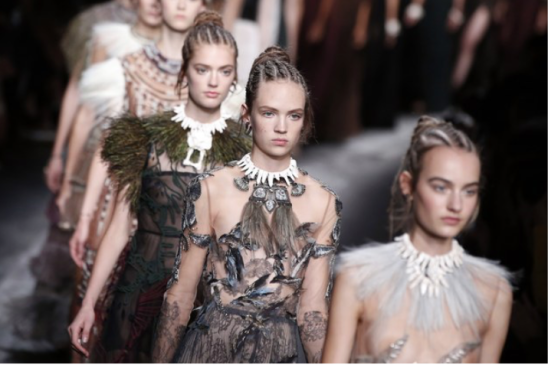In Reid’s blog, he provides an analysis on the overall effectiveness of Goldsmith’s writing. He argues that Goldsmith’s transcript of KLIF was “disconnected” and appears to be missing components of the whole piece. I completely agree with Reid because as discussed in class, the patchwork strategy makes the piece harder to connect as a whole. Rather than chronologically describing events, Goldsmith pieces together very in depth details. Personally it makes for a rather choppy and disengaging piece.

The picture above was derived from an article titled “It is 2016 and Cultural Appropriation is Still Happening”. This image highlights cultural appropriation in something as simple as a hairstyle. The underlying problem here lies in the negative connotation associated with black women and this hairstyle commonly known are corn rows. Ava Greene begins the article by explicitly stating a popular definition of cultural appropriation expressing that it “refers to a particular power dynamic in which members of a dominant culture takes elements from a culture of people who have been systematically oppressed by that dominant group.” My views directly align with those of Greene and more importantly I believe that cultural appropriation originates from ignorance of the background of certain aspects of a culture.
Today, cultural appropriation widens the gap between various cultures making it harder to progress as a society. The insensitivity and offensiveness towards other cultures is what makes it entirely inappropriate. A lot of times, appropriation is confused with the word appreciation even though the two terms contrast one another. Personally, being a minority has made me more cognizant of the problems associated with cultural appropriation. It is a concept that unfortunately is still very prevalent and it will continue to exist until an attempt to understand other cultures is made.
